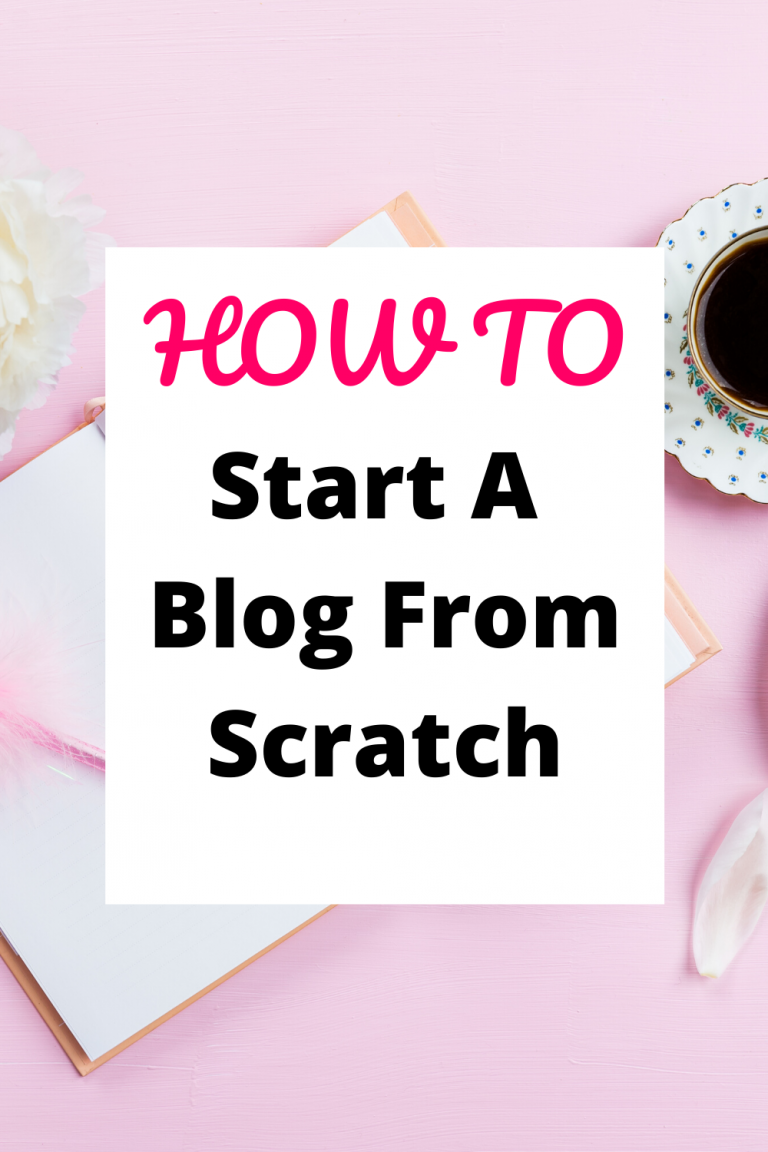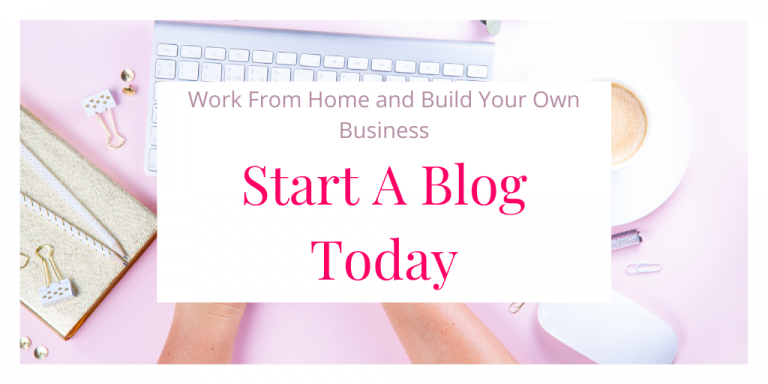
A Beginner's Guide to Starting Your Own Blog: Step-by-Step Instructions
Starting a blog is rewarding, lucrative and fun! It is the best decision I have made and I’m sure thousands of other bloggers would agree.
In today’s digital age, having a blog is not just a hobby but also a powerful tool for self-expression, sharing knowledge, building a community, and even making money.
Whether you’re passionate about travel, food, fashion, technology, or any other topic, starting a blog allows you to showcase your expertise and connect with like-minded individuals worldwide.
If you’re a beginner eager to embark on this exciting journey, this post will walk you through the process of starting your own blog, from choosing the right niche to publishing your first post.
If you haven’t read my post on how to work at home blogging, you can access it here. This post is going to give you a quick rundown on how to start a blog.
Affiliate Disclaimer: This post includes affiliate links which means if you make a purchase, I may make a small commission at no extra cost to you. I only recommend products that I absolutely love!
Step 1: Choose your niche
The very first step in starting a blog is to pick a niche. A niche is a topic your blog will be based on. It is basically what your blog is about.
Your niche should be something that you are passionate about and a topic you want to share with others. If you are not passionate about your blogging topic, writing will feel like a chore.
Consider your interests, expertise, and what you’re passionate about. Are you a fitness enthusiast, a DIY expert, or a finance guru? Choosing a niche that aligns with your interests will not only make blogging more enjoyable but also help you attract a targeted audience.
Before choosing a niche, make sure you are absolutely positive that you are making the right decision. It is hard to change and the last thing you want to do is create a whole new blog later.Take time to brainstorm different niche possibilities even if you have an idea of what you want to write about. You should explore all of the possibilities before making a final decision. It’s beneficial to write a list of your interests and what you love to talk about. Also, consider the blogs or books that you currently read. Ask yourself if you would enjoy writing about any of those topics.
Popular blogging niches
- Health
- Motherhood
- Fashion
- Frugal living
- Home Decor
- Lifestyle
- Travel
- Food
Step 2: Choose a hosting provider
In order to get your blog online, you will need a hosting provider. Hosting is what makes your blog accessible on the internet. I teach my clients how to create their website with WordPress which is free but it does require hosting. Bluehost, SiteGround, and HostGator are popular choices for WordPress hosting. They all offer reliable service and excellent customer support. I personally recommend HostGator! They are an excellent affordable hosting provider and very popular among bloggers!
I strongly discourage people from using a website design service such as Wix or Weebly. With these types of platforms, you do not own your website and you have much less control over what you can and cannot do. When you choose to operate your blog through WordPress and use web hosting, you retain complete control over your business.
In fact, When you choose HostGator, they automatically set you up with WordPress from the start which makes the process easy. In my E-Book, I show you how to set up web hosting in easy to follow steps.
When first starting out, you will have questions and you may need help. HostGator provides you with 24-7 support to assist you and answer questions you may have. This comes in handy when you need help troubleshooting!
Step 3: Select a domain name
You will need to choose a domain name for your website. People most commonly use their blog name for their domain. Although, some bloggers us their full name to brand themselves. This is all personal preference, there is no right or wrong here.
It is better to stay away from long domains and to instead keep it short. Your domain should be easy for others to remember.
Your domain name is your blog’s online address, so choose it wisely. Ideally, your domain name should be relevant to your niche, easy to remember, and reflect your brand. You can purchase a domain name through domain registrars like GoDaddy or Namecheap. If possible, opt for a .com domain as it’s the most widely recognized and trusted extension.
Remember not to stress too much about choosing a domain because it is always something you can change in the future. Have fun and get creative! You can even use a name generator such as Nameboy.com to help you come up with ideas.

Step 4: Design your blog with a free WordPress theme
Once you have your WordPress site set up, you will need a great theme. Don’t be fooled into thinking you need to purchase a theme, there are a lot of beautiful free ones! In my Ebook, How to Create a Blog:The 7 Vital Steps, I show you how to access over 100 free prebuilt website templates! This means that you get to choose a template with a built-in theme. All you have to do is edit it to your liking.
It is crucial that you have a great theme to suit your audience. Your website presence is like the storefront of your business, it should be welcoming and professional. A good design speaks volumes about your credibility.
It lets readers know that you care enough to make your site professional and user-friendly for your audience. Most importantly, your design should be simple so your readers are able to navigate it easily.
Before choosing a theme, you should pick out your brand colors and fonts. You will be using these colors a lot during the editing process.

Step 5: Create compelling content
To bring people to your blog, you need to create great content on a regular basis. It’s important to write every blog post with a strategy. There are a few types of blog posts that will boost your website traffic like crazy!
If you are wondering why people are not showing up to your site, its time to plan some new content. To learn how to grow your website traffic, see our article: How to bring people to your blog. Your blog should both inspire others and help them solve a problem.
Creating a successful blog is all about helping people solve a problem, a problem related to your blog topic. For example, in this blog post, I am guiding you on how to create a blog. This is something that you probably need help with.
Every time you provide your readers with value, they begin to trust you more. Trust and relationship building is the foundation of growing a successful business. If your readers trust that you have their best interest at heart, they will read your content regularly.
Remember to keep your audience in mind and provide value with every post. Whether you’re writing how-to guides, sharing personal experiences, or providing tips and advice, make sure your content is engaging, informative, and well-written. Don’t forget to include images, videos, and other multimedia elements to make your posts visually appealing.
Step 6: Promote your blog
Promoting your blog is essential to attract readers and grow your audience. Start by sharing your posts on social media platforms like Facebook, Twitter, and Instagram. Join online communities and forums related to your niche and participate in discussions. Collaborate with other bloggers and influencers in your industry to reach a wider audience. Additionally, optimize your blog for search engines by using relevant keywords and meta tags to improve your visibility in search results.
Step 7: Engage with your audience
Building a loyal audience is key to the success of your blog. Take the time to interact with your readers by responding to comments, answering questions, and soliciting feedback. Encourage engagement by asking questions, conducting polls, and hosting giveaways. Building a sense of community around your blog will not only keep readers coming back for more but also help you establish yourself as an authority in your niche.
Step 8: Monetize your blog
Once you’ve built a solid readership, you can explore monetization options to generate income from your blog. Some popular monetization strategies include affiliate marketing, sponsored content, selling digital products or services, and displaying ads. Choose monetization methods that align with your niche and audience to maximize your earning potential without compromising the integrity of your blog.
Step 9: Stay consistent and keep learning
Consistency is key to growing and maintaining a successful blog. Set a regular posting schedule and stick to it to keep your audience engaged and coming back for more. Stay updated on the latest trends and developments in your niche and continue to refine your blogging skills. Remember that building a successful blog takes time and effort, so stay patient and persistent in your blogging journey.
In conclusion, starting a blog may seem daunting at first, but with the right approach and mindset, anyone can create a successful online presence. By following these step-by-step instructions and staying committed to providing valuable content to your audience, you’ll be well on your way to building a thriving blog that reflects your passion and expertise. So what are you waiting for? Start your blogging journey today and unleash your creativity to the world!
This is just a quick rundown on how to create your own blog!
To set yourself up for full success from the start, access our E-Book here. I walk you through the 7 vital steps to build an empire blogging. Blogging is an incredible journey and this is only the beginning!

